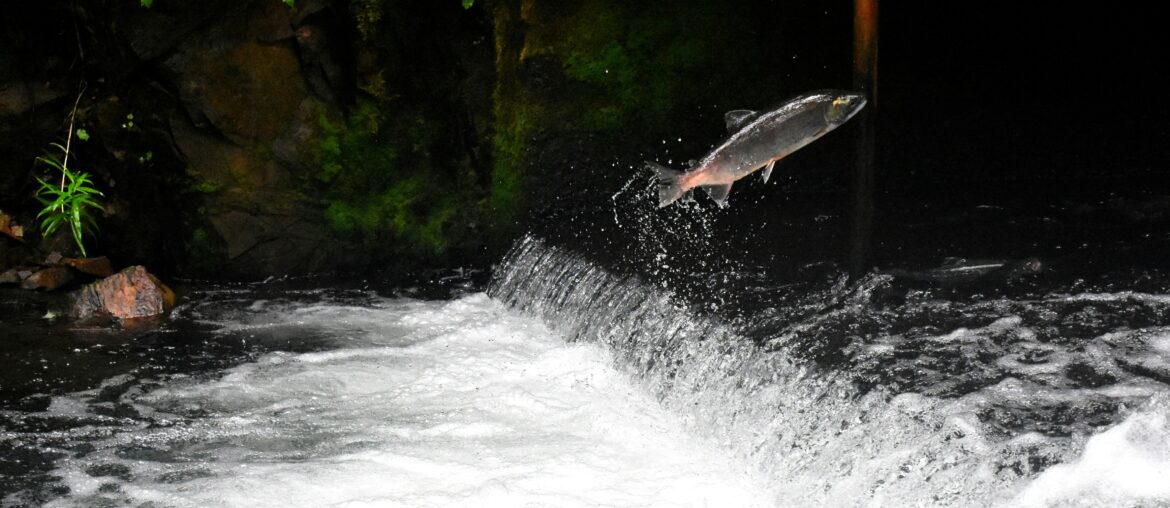For the first time in over a century, the Klamath River is flowing freely below Keno Dam—marking a historic shift for salmon populations and water management in the Pacific Northwest.
In 2024, four hydroelectric dams were removed from the Klamath River, the largest such project in U.S. history. This restoration effort, led by Tribal nations, scientists, and federal agencies, has reconnected more than 400 miles of historical spawning grounds once blocked to migrating fish like Chinook and steelhead trout. But as the river reclaims its natural course, scientists and water managers now face a complex new challenge: how to balance water needs for both people and fish in a landscape shaped by agriculture, climate stress, and ecosystem recovery.
Tracking Salmon in a Restored River
The U.S. Geological Survey’s Western Fisheries Research Center (WFRC), in partnership with the Yurok, Hoopa, and Karuk Tribes, is leading a multi-year study on how juvenile Chinook salmon are adapting to their newly accessible habitat. Using surgically implanted acoustic tags and river-wide tracking systems, researchers are monitoring how young salmon navigate the river on their journey to the Pacific Ocean—a process known as outmigration.
“We’re learning how juvenile salmon respond to changes in water flow, riverbank access, and the presence of parasites that have historically impacted survival,” said WFRC researchers. This work builds on decades of advocacy and traditional ecological knowledge shared by Tribal leaders who have long called for a restored river.
Early Signs of Success
Each year, starting in 2023, around 800 tagged juvenile Chinook are released into the river below the now-removed Iron Gate Dam. As these fish make their way downstream, a network of acoustic receivers and cameras tracks their movement in real time. Scientists are especially interested in whether changes in flow rates influence fish behavior, migration timing, or exposure to harmful parasites like Ceratonova shasta, which thrives in slow-moving water.
Notably, over 6,000 Chinook salmon were documented returning to spawning grounds above the former Iron Gate site in fall 2024, according to Active NorCal, marking one of the earliest signs that the restoration is working.
New Focus on Keno Dam
Another part of the research is focused upstream at Keno Dam, which remains in place and serves as a key control point for water distribution. Built in 1967, Keno was not historically a barrier to salmon because other dams downstream had already blocked their passage. But now, for the first time in decades, adult salmon are approaching Keno and using its fish ladder. WFRC scientists have installed acoustic and video cameras to study how coho and fall-run Chinook navigate the structure and whether the ladder supports successful migration.
Looking Ahead: Managing Competing Needs
The findings from this work are expected to guide how and when water is released through control points like Keno Dam. In a region where agriculture, fisheries, and Tribal communities all depend on the river, understanding these dynamics is critical.
“Our goal is to provide science that helps balance competing water needs while protecting fish populations that are culturally and ecologically vital,” WFRC researchers said.
With dam removal now complete, the Klamath River Basin is entering a new era—one where science, traditional knowledge, and adaptive management will be essential to shaping its future. While the return of salmon is a hopeful sign, ongoing challenges remain. Water quality, habitat restoration, and equitable water distribution will require continued attention and investment.




